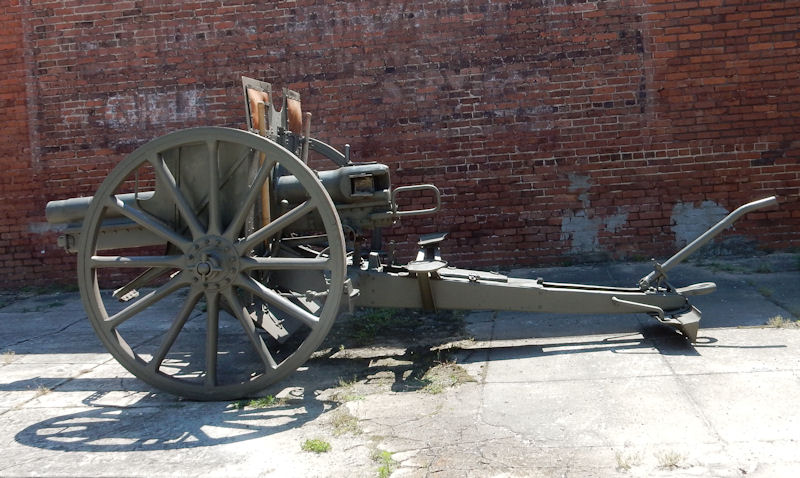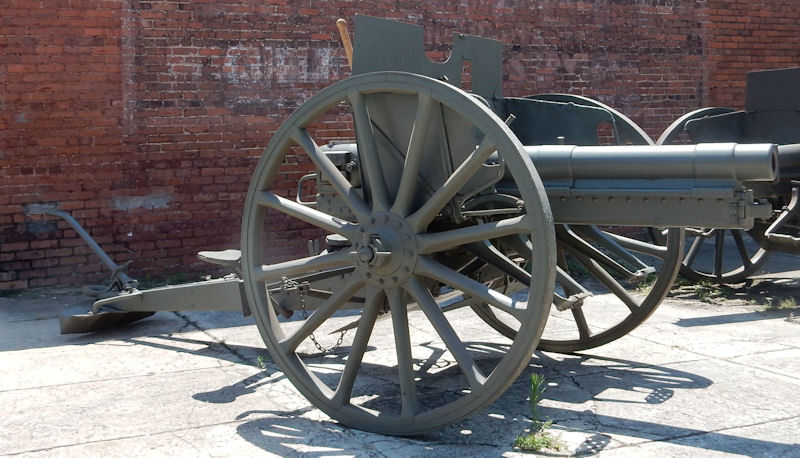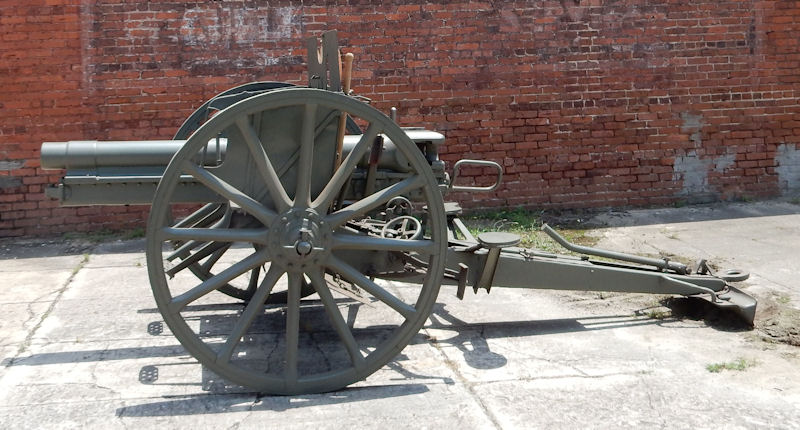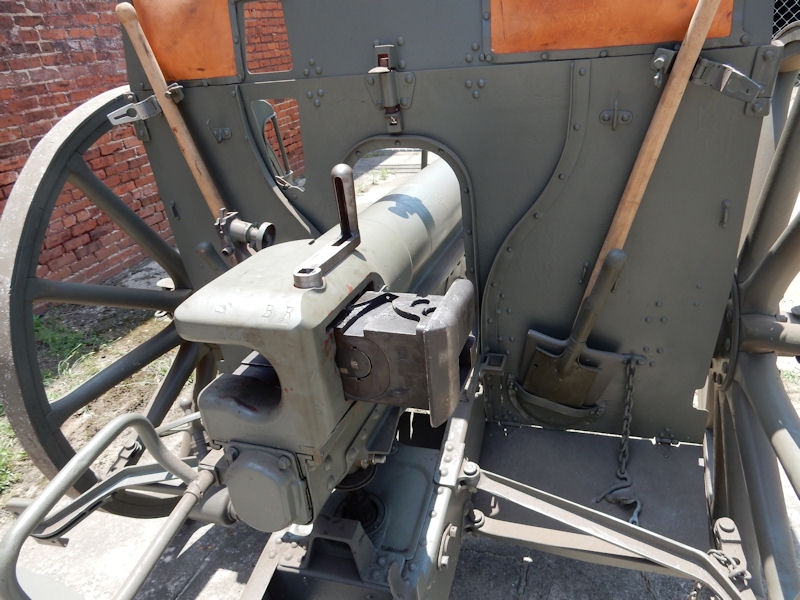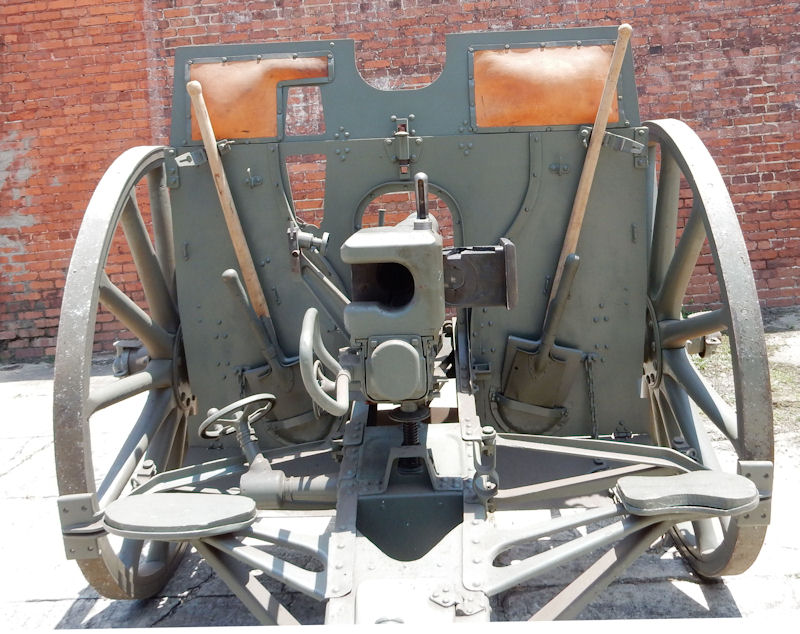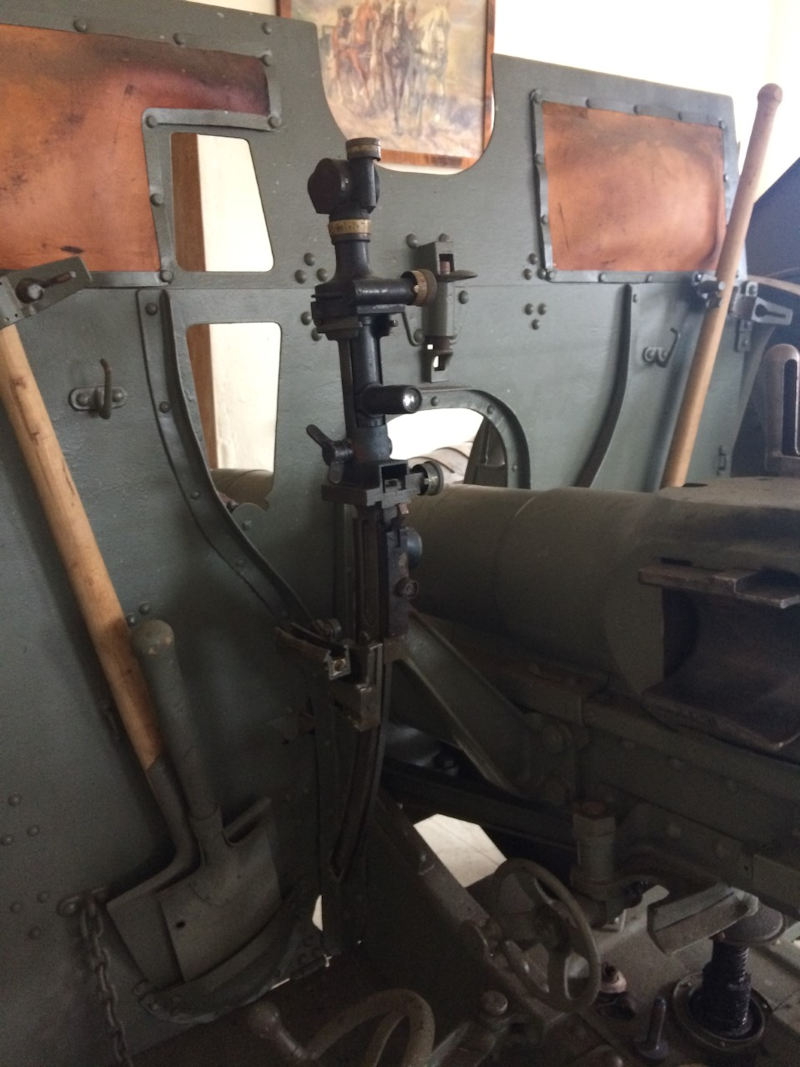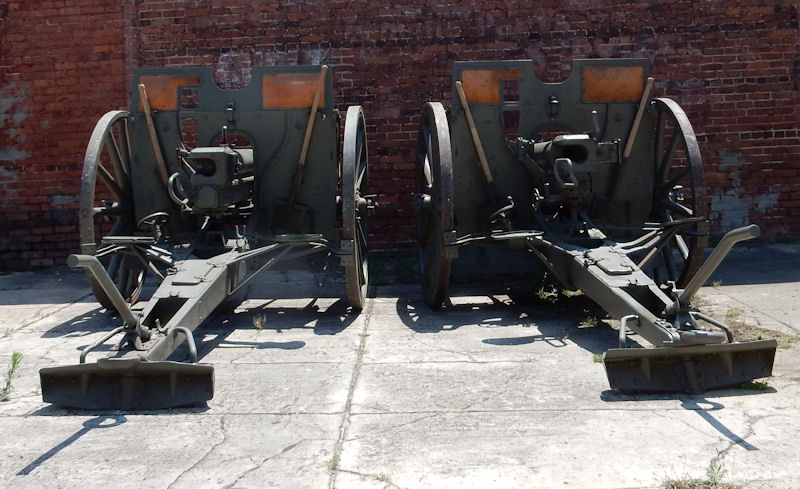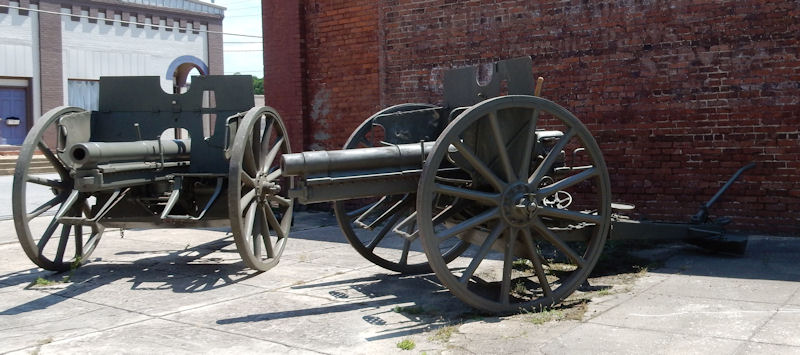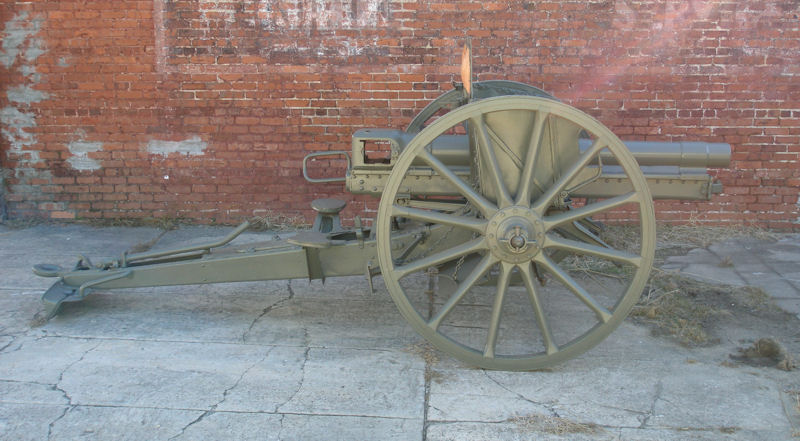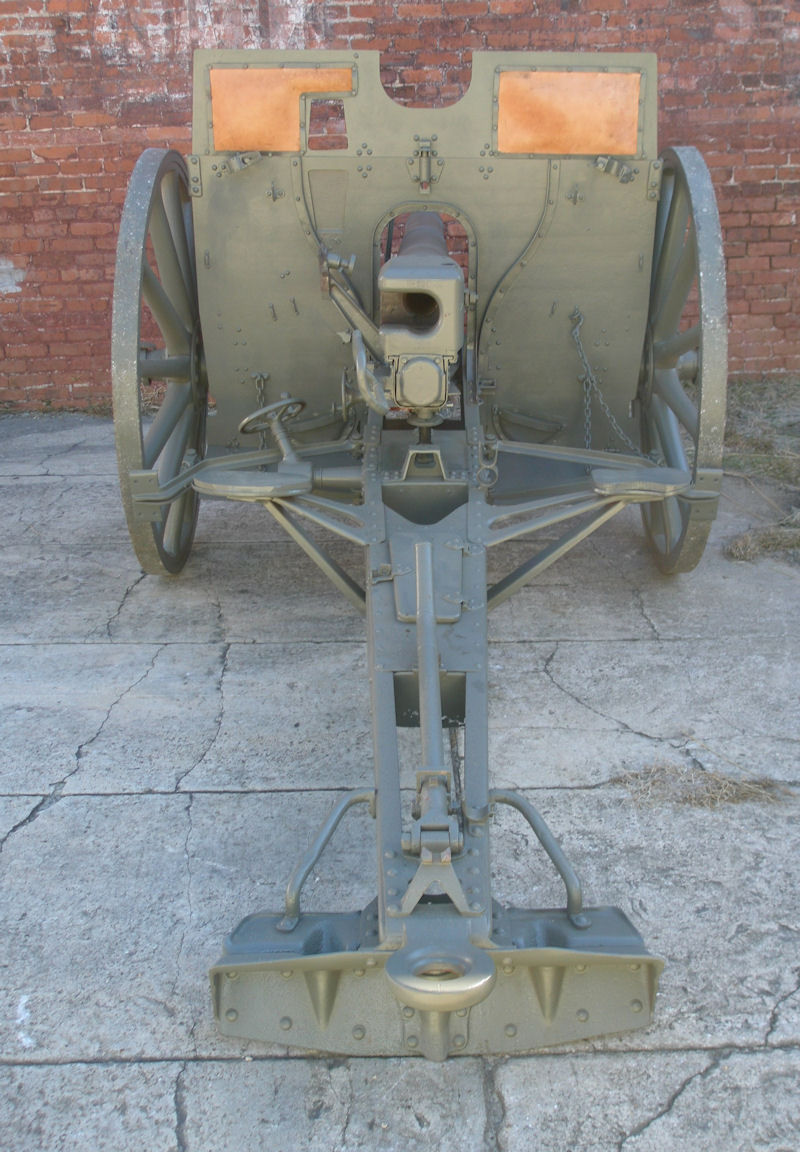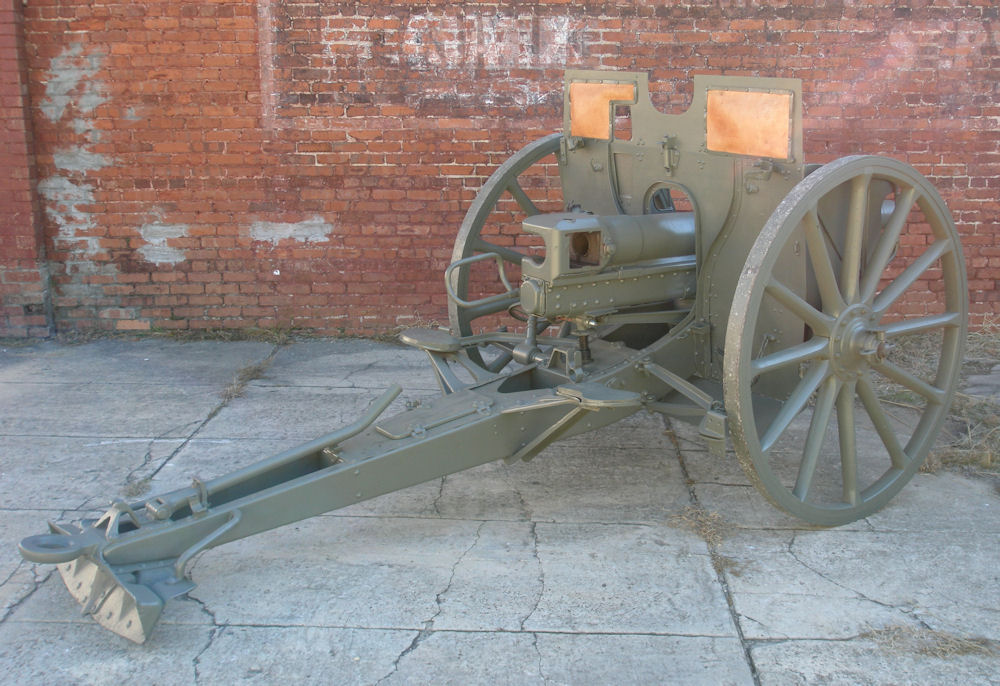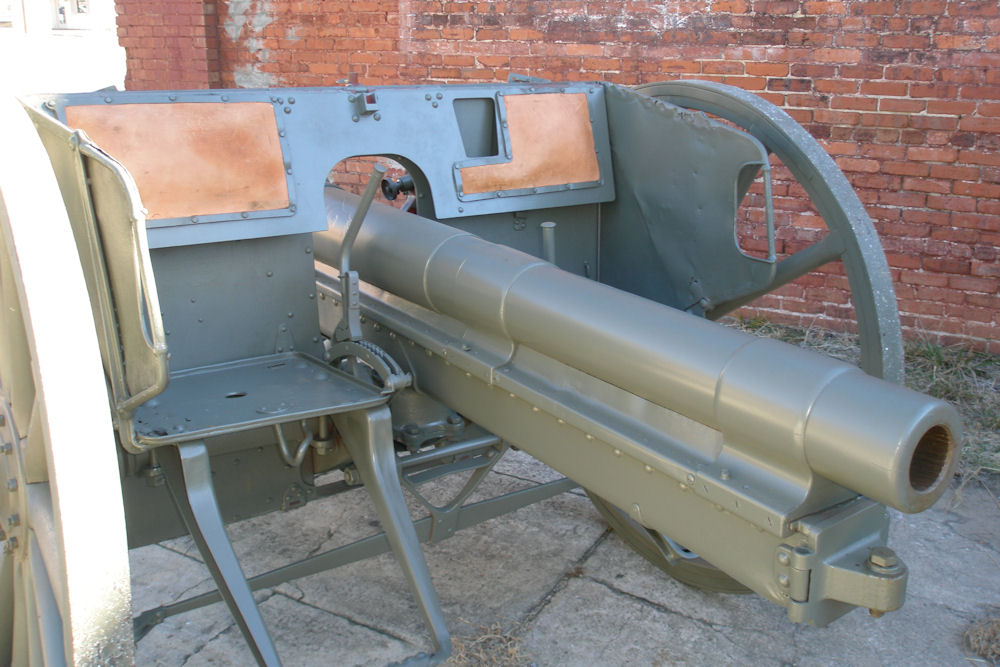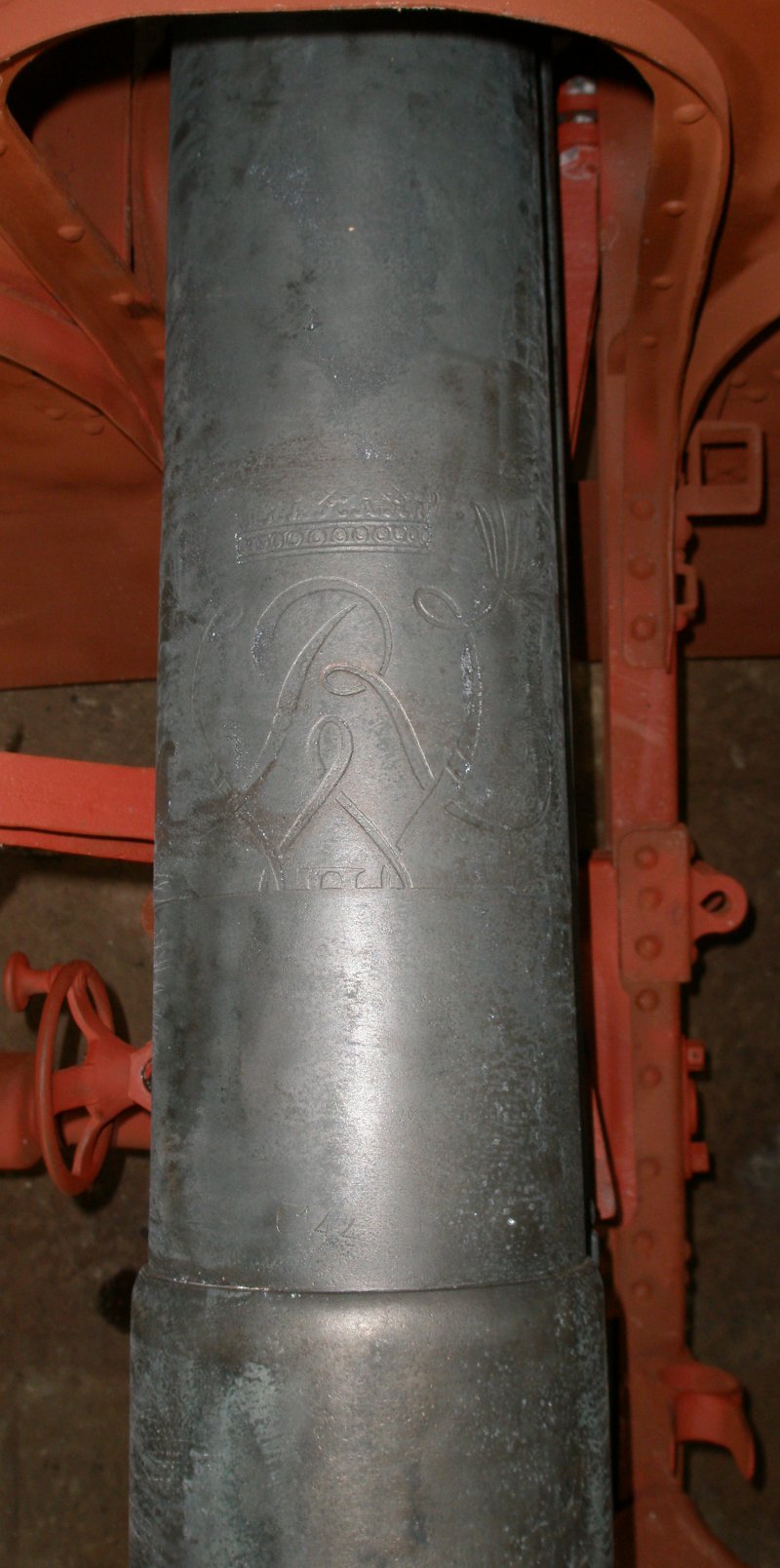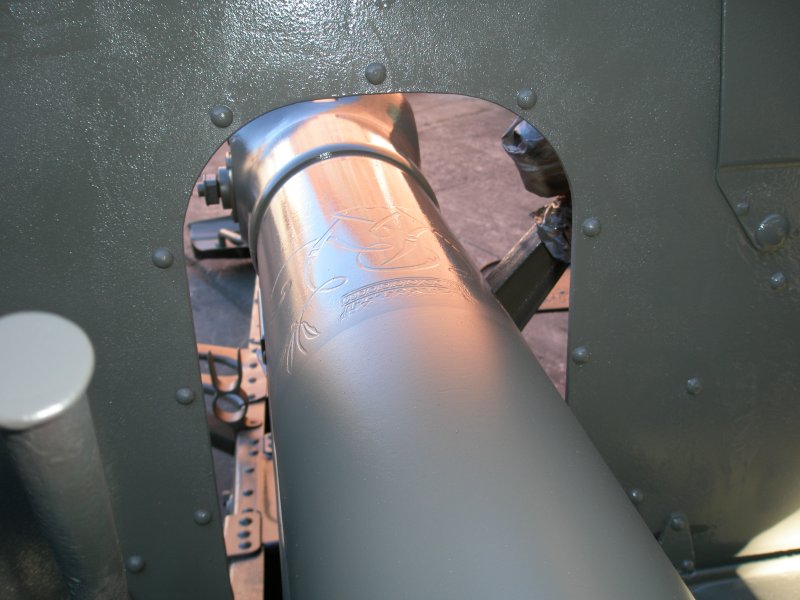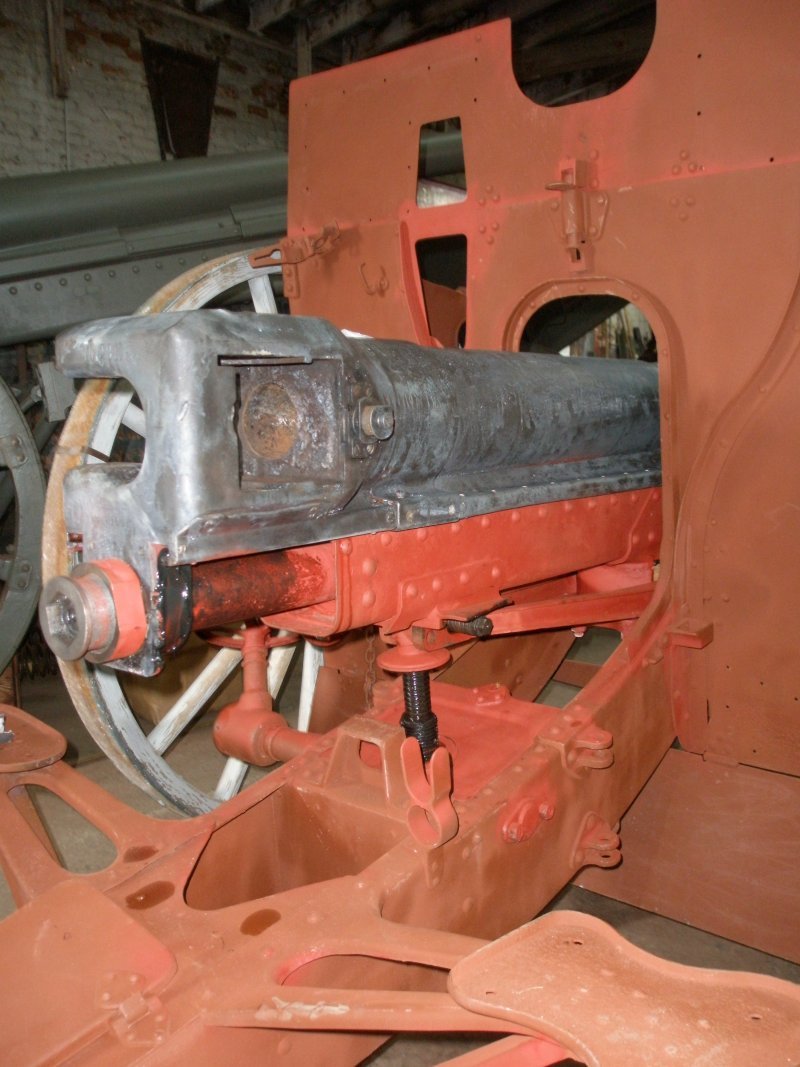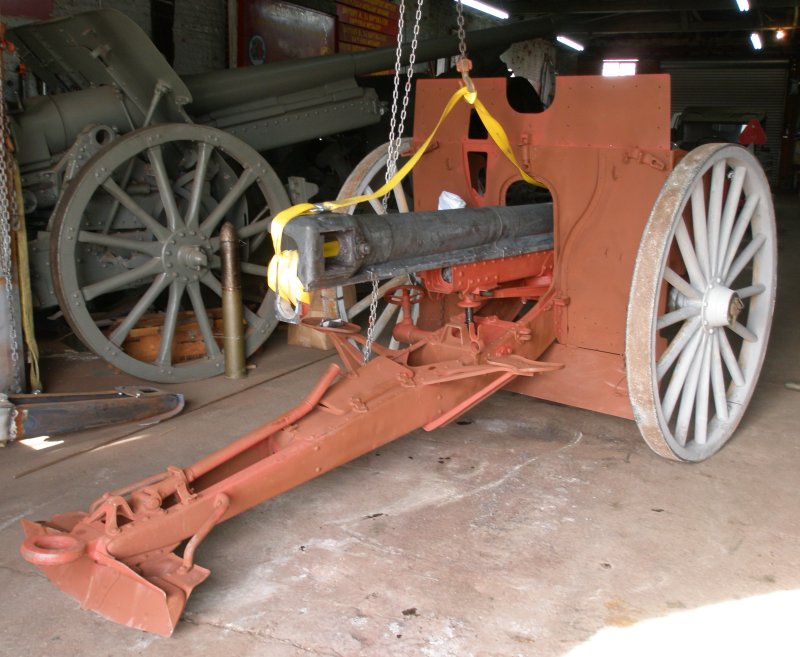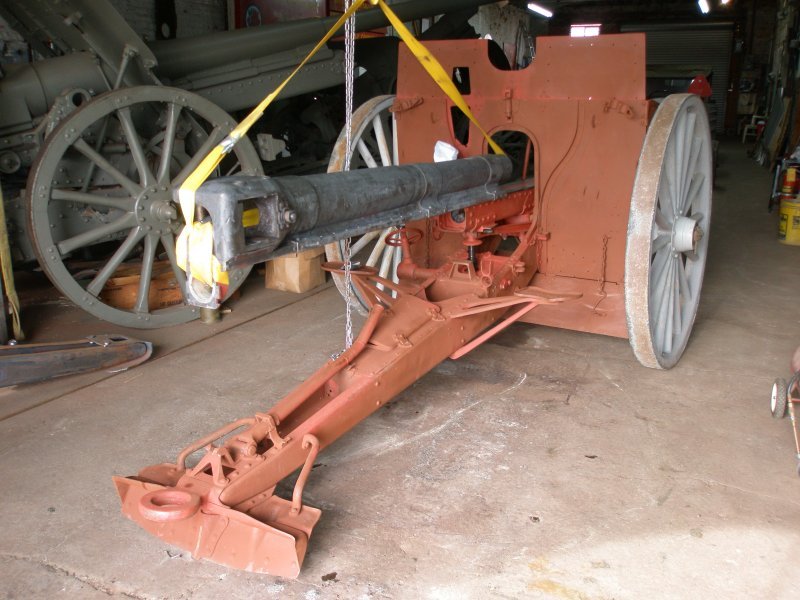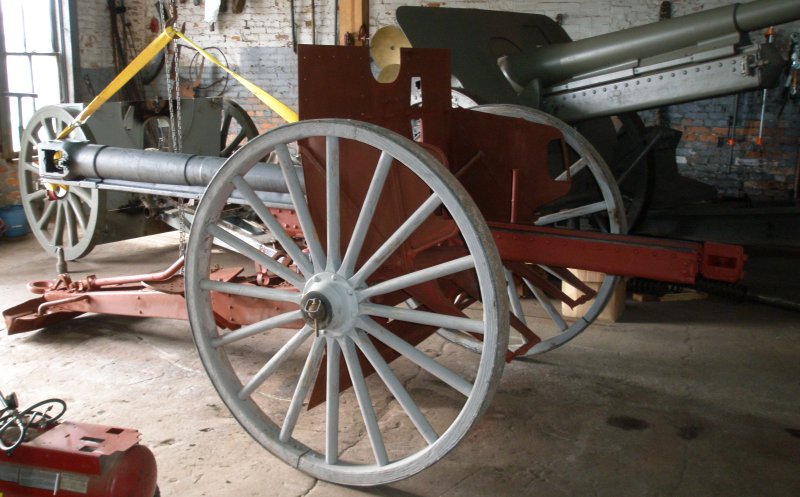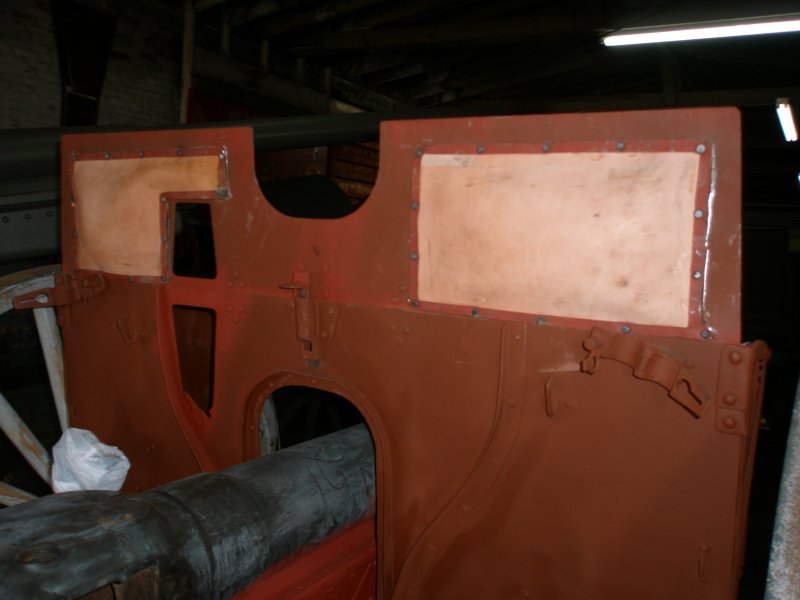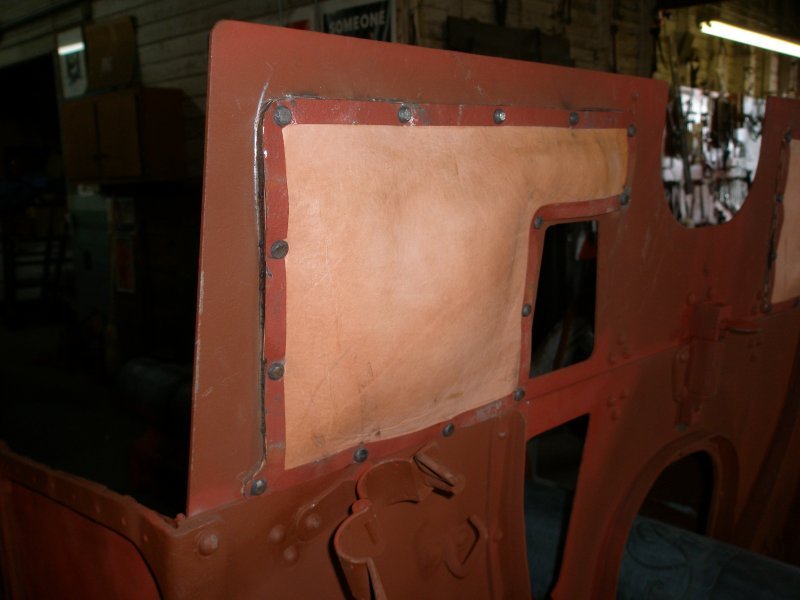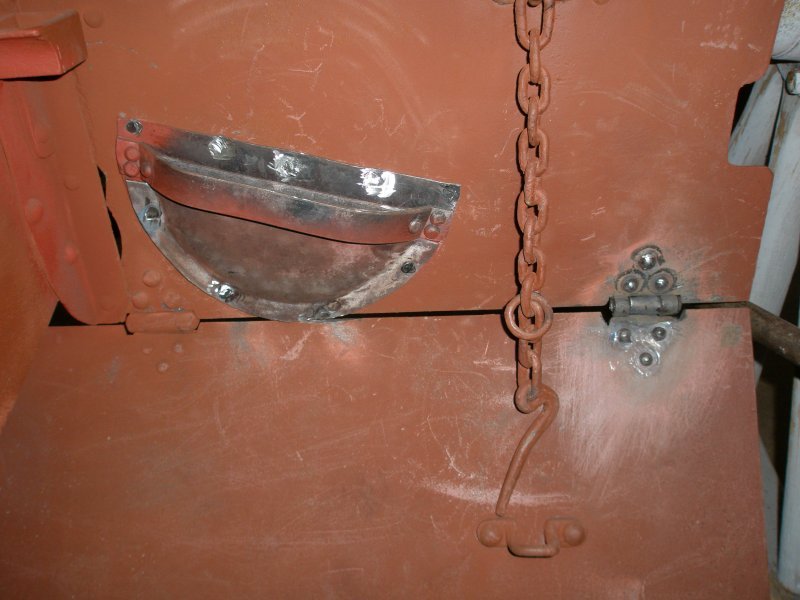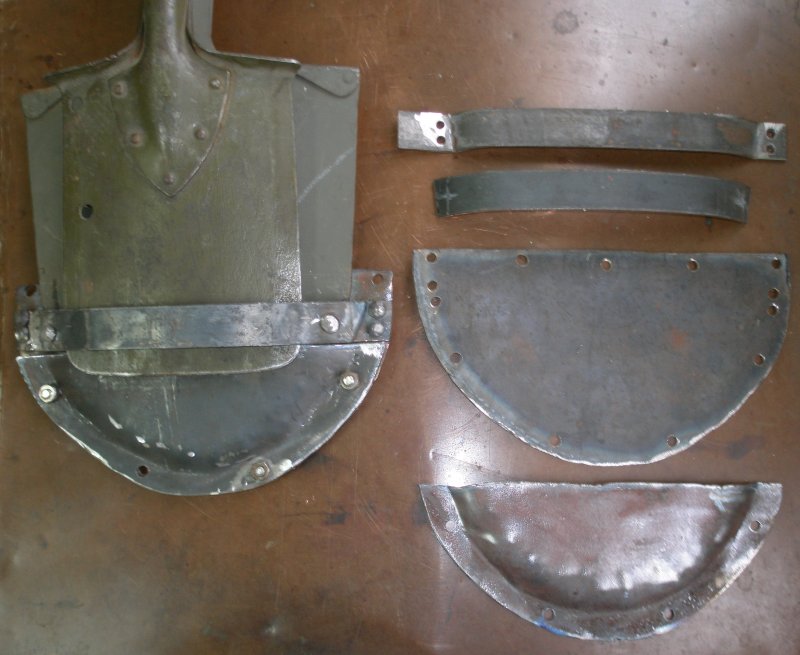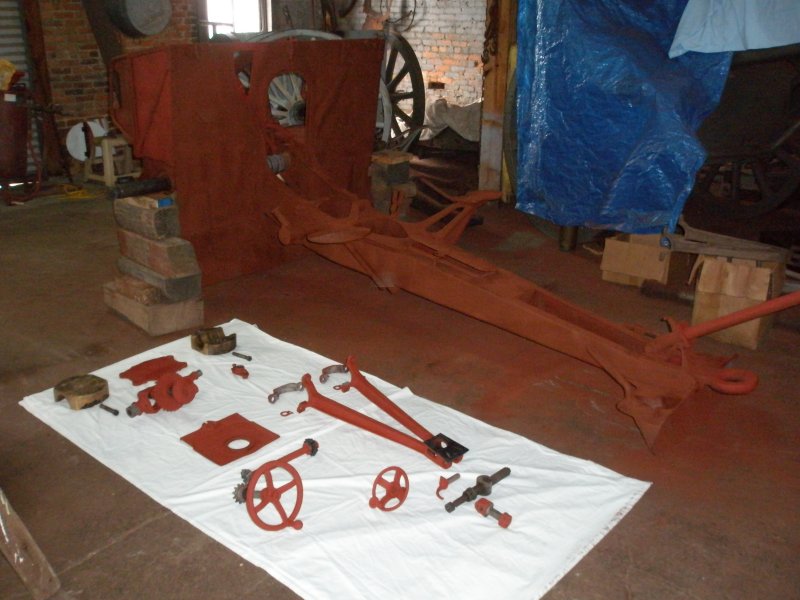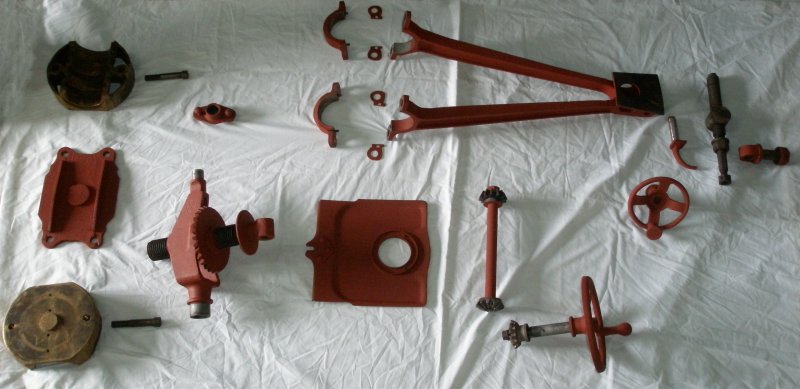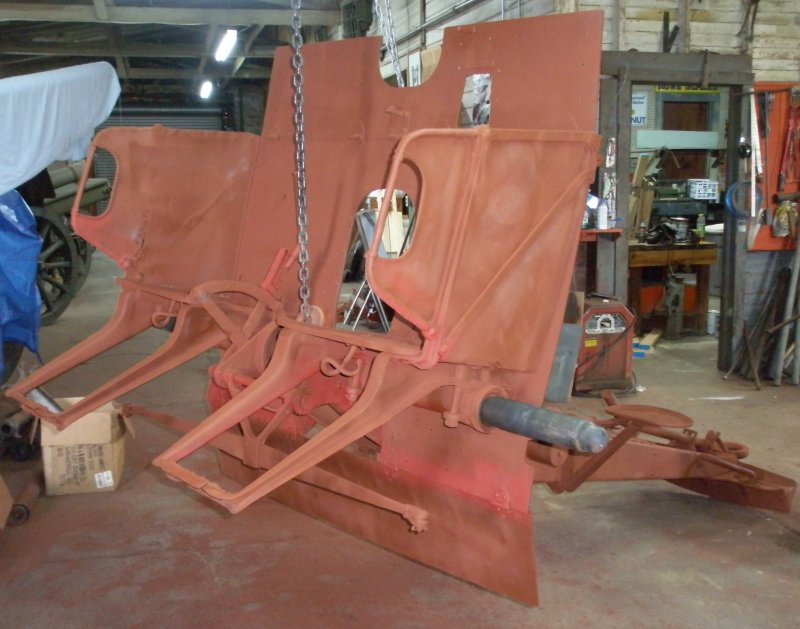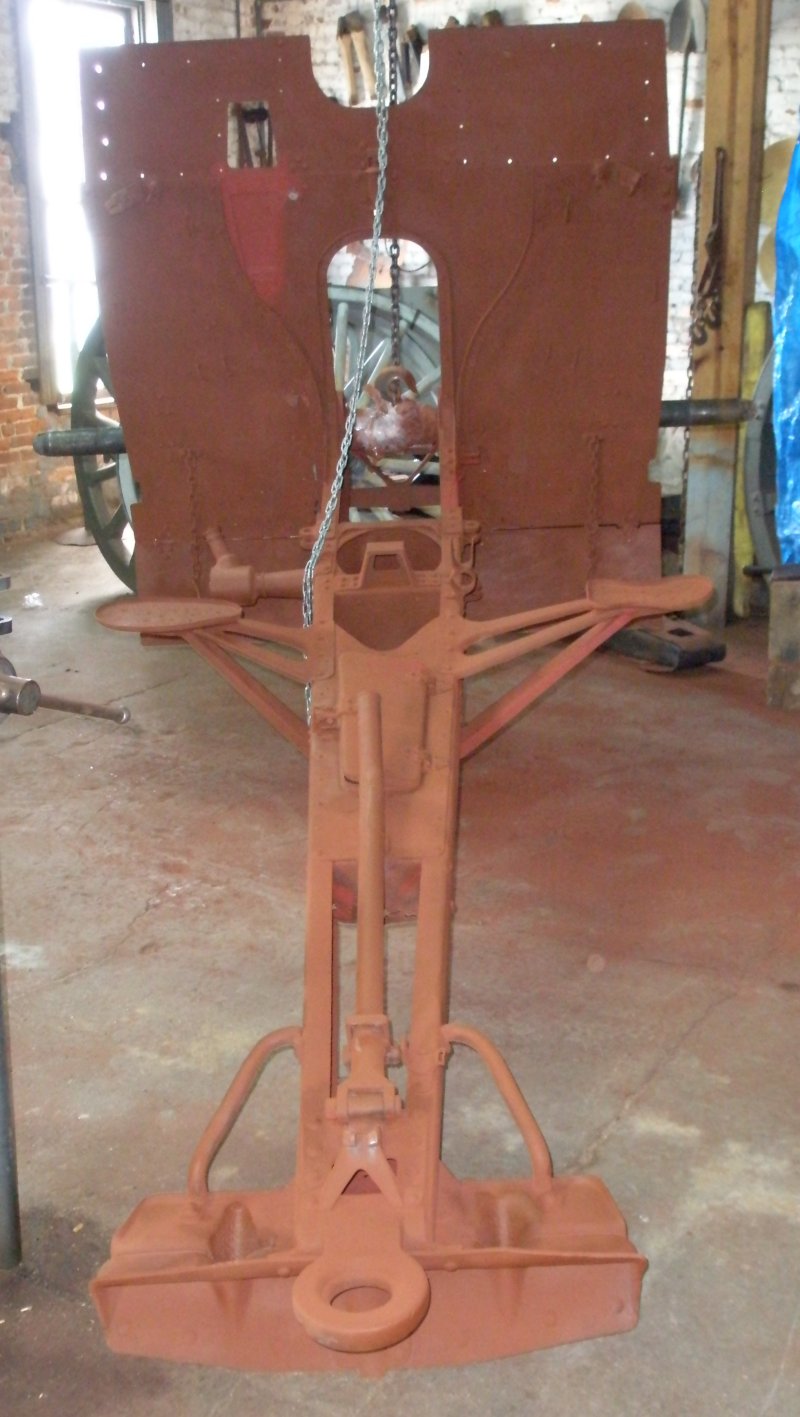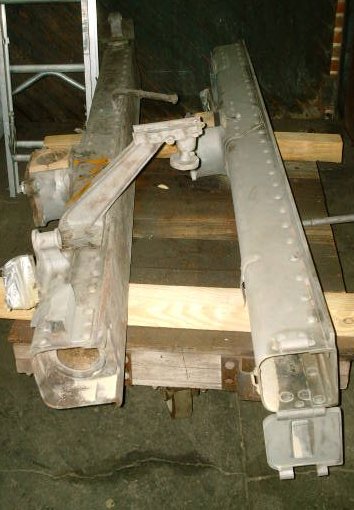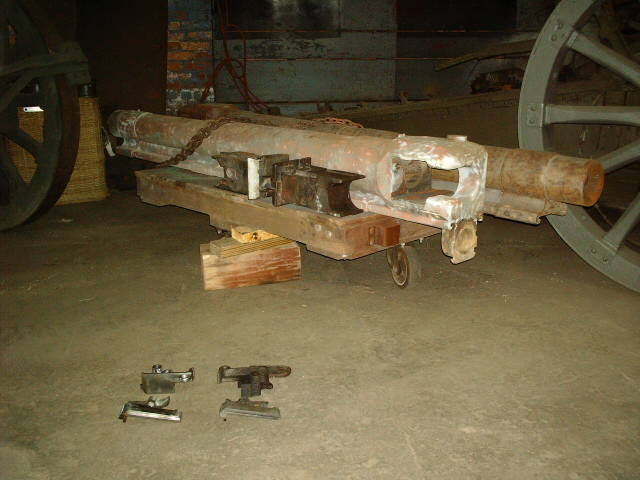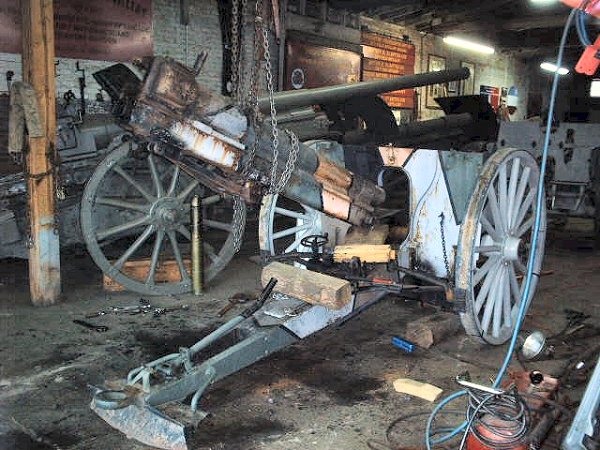7,7cm leichte Feld Kanone (l.F.K.) 1896 n/A
Above: This is a German 7,7cm lFK 1896 n/A. This gun was manufactured in 1896. Restoration is nearly complete at this point. The only significant piece lacking is the trigger. This is one of two guns of this type in the collection. Restoration is complete on the second (1917 dated) gun
Above: Side view of the 7,7cm lFK 96 n/A. The 7,7cm was originally designed as a non-recoil gun but was rebuilt in 1906 with an improved breech, a spade, shield, layer and loader seats, plus the hydro-spring recoil mechanism. With these modifications the 7,7cm lFK 96 was called the “New Model”. This is what the n/A represents in the designation
Above: Another side view of the 7,7cm light field gun
Above: The sliding wedge breech mechanism of the 7,7cm lFK 96 n/A, missing the trigger
Above: Rear or breech view of the 7,7cm lFK 96 n/A showing the attached pioneer shovels and shorter entrenching tools. The sliding wedge breech block is completely open in this photograph
Above: The 7,7cm lFK 96 n/A sight mount and sight
Above: Right, is the 1896 dated gun still in need of a replacement trigger. Left, is the 1917 dated 7,7cm lFK 96 n/A that is compete
Above: Right, is the 1896 dated gun still in need of a replacement trigger. Left, is the 1917 dated 7,7cm lFK 96 n/A that is compete
Above: A photograph of the 7,7cm
l.F.K. 1896n/A after painting wartime field grey. The breech block is missing in this photo
Above: A rear veiw of the German 7,7cm lFK 1896
n/A
Below: 7,7cm lFK 96 with the upper shield folded forward. In this way
the leather back pads are availble for the
two gun crew members riding on the axle tree seats
The 7,7cm. leicht Feld Kanone
1896 neuer/Art (light field cannon 1896 of the new pattern) is a German Field
Artillery piece originally designed by the Fried. Krupp company with no recoil
system, however, most were rebuild later by the Rheinmetal Company with a
hydo-spring recoil system, spade and shield. Follow on production continued
with 7,7cm. l.F.K. "96 n/A pieces built from the ground up with the recoil
system, spade and shield. This rather dramatic change in design was prompted
by the realization of the rapid fire capabilities of the French 75mm mle/1897
with its hydro-pneumatic recoil system.
The 7,7cm. l.F.K. "96 n/A, like most German artillery, has a horizontal
sliding wedge breech block. It fires fixed ammunition consisting of a primer
train, shell case and projectile. Point detonating (PD) and time fuzes were
used by this piece. Elevation and traverse are limited by the design of the
trail. The gun is fitted with a folding shield and, a set of axle tree seats
are mounted to the front to seat two gun crewmen while the piece is towed.
The 7,7cm. used a panoramic sight graduated in mils (0-6400) and a graduated
sight-mount used to calculate quadrant (elevation of the gun barrel). Note
that this gun is missing its sight-mount. The barrel is marked with the Latin
phrase "ULTAMA RATIO REGIS" roughly translating to mean that artillery
is the "Finial Reckoning of Kingdoms". This
phrase served as the motto of both the German Field and Foot Artillery branches.
The overlapping letters "WRII" and crown is the crest for Kaiser
William II, who was the King of Prussia and Emperor of Imperial Germany. The
barrel was once marked with a Prussian Eagle crest near the muzzle but the
original barrel mantel was replaced in a wartime era depot rebuild. Because
of the pressure of WW1 wartime production the eagle was not again marked onto
this replacement barrel mantel.
In wartime service one shortcoming in its design became evident. The trail
did not allow enough elevation so greater range was difficult to achieve.
Field expedient methods where employed by the crewmen to increase range and
a redesigned gun was pushed into service incorporating the carriage of the
10,5cm. l.F.H. 1898/09 and the barrel/recoil group of the 7,7cm. l.F.K. "96
n/A. The few guns produced of this type were known as the K.i.H. Following
this effort, the 7,7cm. l.F.K. 1916 was developed again using the carriage
of the 10,5cm. l.F.H. "98/09 but was fitted with a completely new longer
barrel. The Box trail of the 10,5cm re-used in the design of both the K.i.K
and the 7,7cm. l.F.K. "16 allowed for grater elevation and increased
range.
Above Left: A photograph of the Kaiser William
II (WRII or William Rex II) crest. You can see that this Kaiser William II
crest is not complete. When the barrel was first rebuilt in 1906 as an
upgrade from the 7,7cm lFK 1896 non-recoil gun type to the 7,7cm lFK 1896 n/A
with a hydro-spring recoil mechanism the lathe work for the new bands partly
erased the scroll. When this piece was first produced as a 7,7cm lFK 1896
type there was a Prussian Eagle crest etched onto the muzzle end of the barrel.
During the wartime period when this piece was yet again arsenal rebuilt the
breech ring sleeve was retained with the Kaiser William II crest but the barrel
sleeve, with the eagle crest, was replaced. This is a fairly common occurrence
and it is actually less common to see a 7,7cm lFK 96 n/A with both crest. Above
Right: Another view of the Kaiser William II crest after the barrel was
remounted onto the recoil mechanism and painted field grey.
Above: The barrel sliding back into position along the recoil cradle. The cylinder of the recoil mechanism is visible fitted to the breech ring. The piece is still only painted in red oxide primer.
Above: The barrel almost in place.
Above: The barrel hosted up into position and lined up with the recoil mechanism.
Above: A side view of the barrel hosted into position with the recoil mechanism.
Above: New leather back pads riveted onto the
shield. These cushion the heads of the crewmembers who ride on the axletree
seats.
Above: Close up of the left shield back pad riveted
into place.
Above: Close up of one of the two new shovel mounts riveted into place on the lower shield.
Above: The shovel mounts for the 7,7cm lFK 1896 n/A are for two shovels each. One is the large pioneer shovel and the other is the short handled trench shovel. In this view one shovel mount is disassembled and the other is riveted together.
Above: In this view of the restoration process, the elevation and traversing mechanisms are laid out to the side of the carriage.
Above: Close up of the elevation and traversing mechanisms.
Above: The axletree seats are seen is this view of the carriage of the 7,7cm lFK 1896 n/A.
Above: A rear view of the carriage of the 7,7cm. l.F.K. 1896 n/A.
Above: Both 7,7cm’s recoil cradles after sand blasting. The Hydro-Spring Recoil system is removed.
Above: These are the barrels of the two 7,7cm. l.F.K. 1896 n/As being restored. In this view they have been sand blasted and have their breech blocks and internal parts laying beside them
Above: The 7,7cm. l.F.K. 1896 n/A being disassembled for a ground up restoration
German 7,7cm lFK 96 n/A Limber Protze
German WW1 Era Field Artillery Harness and Saddle page
German 7,7cm lFK 1896 n/A field gun (1896 dated)
German 7,7cm lFK 1896 n/A field gun (1917 dated)
German 7,7cm lFK 1916 field gun
German 7,7cm lFK 96 & 16 Ammunition
German 7,7cm lFK 96 n/A Sight Mount
German Field Artillery Aiming Circle
German 7,7cm Gunner's Quadrant
Back to Main
All images, research, and text are sole property of Ralph Lovett.
